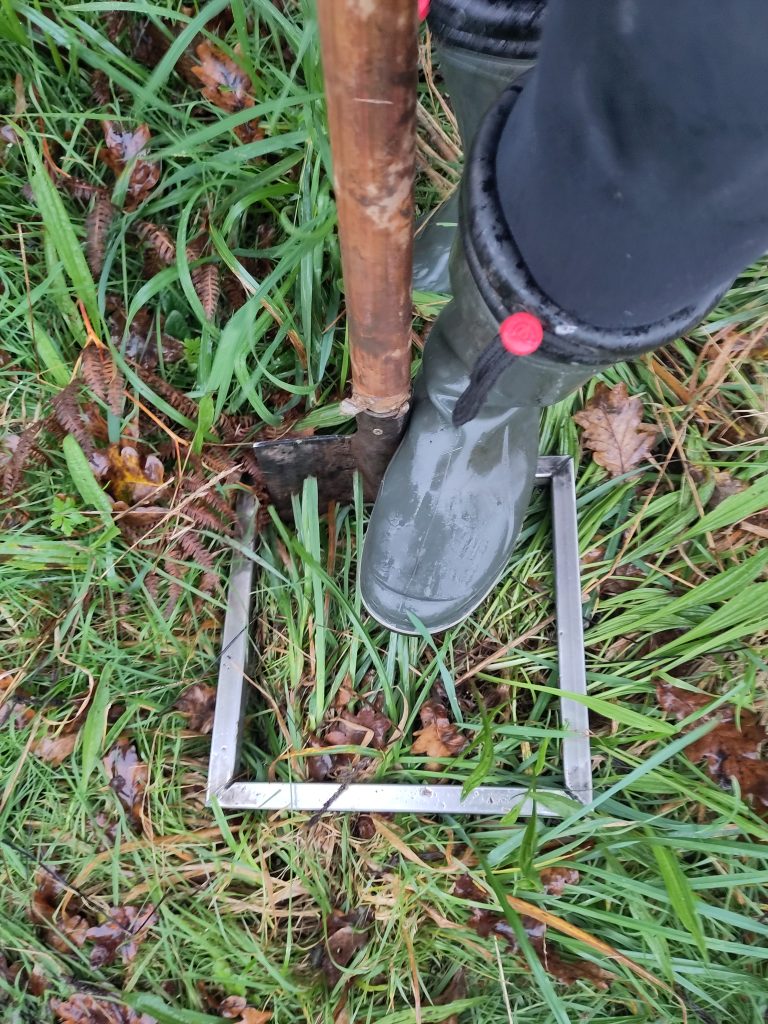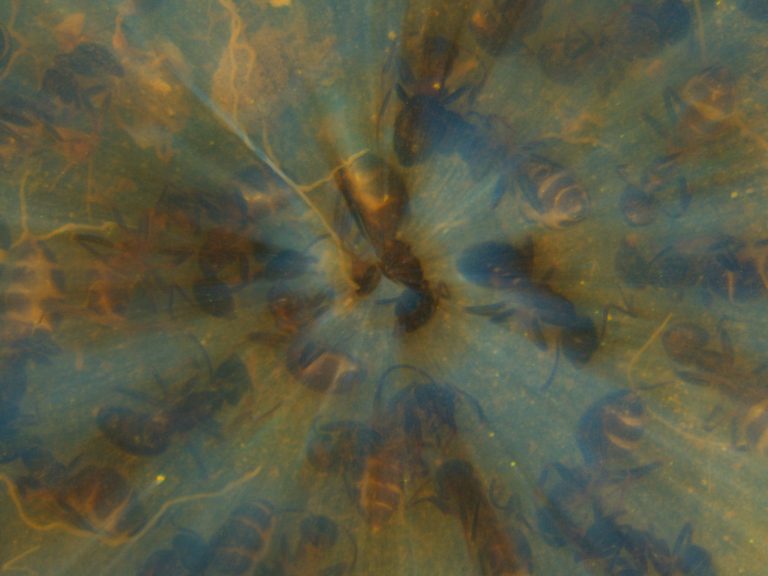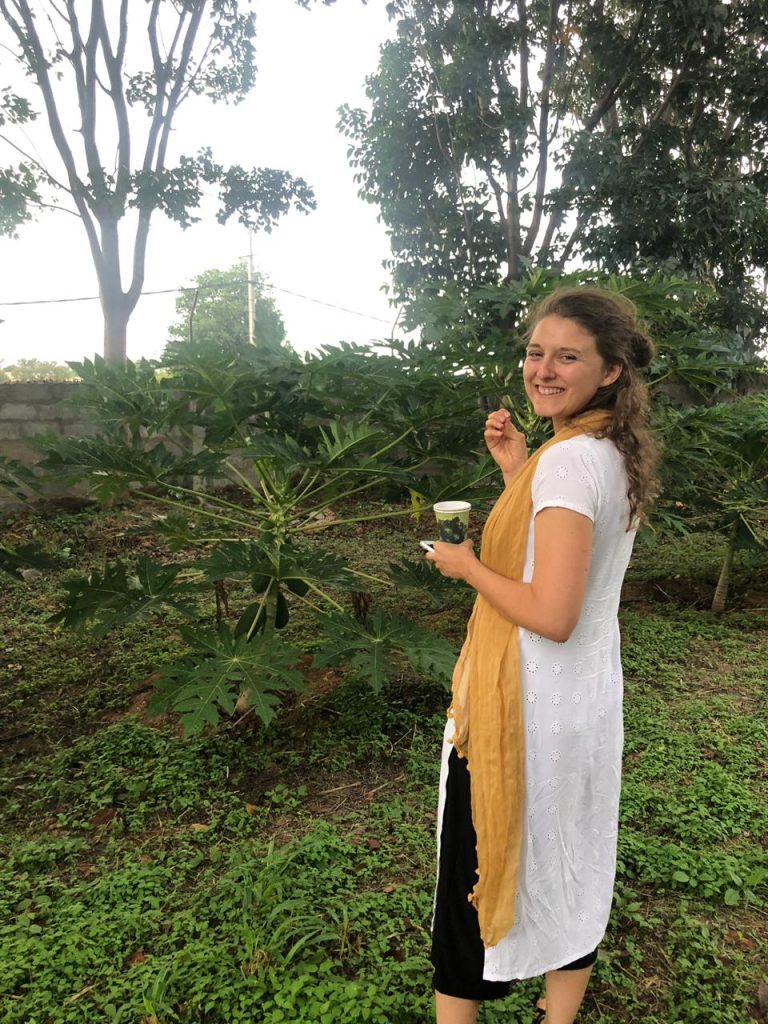Xistral is this weird wind power wetland park in the North of Galicia, close to Ferrol and Vilalba. It’s not a protected zone, most likely due to the presence of the enormous wind power park and the influence of farmers’ strong lobby. There are a lot of wild horses and some close pastures for cattle grazing.
Finding a suitable weather window for winter sampling isn’t easy. The weather there is rough with a lot of the Atlantic storms and clouds that traveled far being caught in the hills that reach up to almost 2000m. For a majority of winter months, those hills are even covered in snow. We went in March, between storms, hoping the snow line would be high enough to allow sampling. While we arrived at sunshine (must be one of those few lucky days over the year), this did not consider the wind. We took our first samples at a wind speed on 1100m that can easily blow your material away. So sitting on the boxes and plastic bags that we put the samples in, complicated the sampling process a bit. Apart from running after some boxes that flew away, the first sampling up high is just stunning in a stunning landscape. Up there no trees are growing because the acidic soils do not support enough nutrients for trees.






For the night, we went back to the nearby town of Vilabla to sleep in that funny hotel that just looks how you would picture a hotel from the 70s without much renovation, a lot of dark wood, thin walls and funny decoration. Vilalba is this weird little town on another branch of the Camino de Santiago (as basically all towns here. Can recommend a BBC history episode on this and how they all wanted to have a share so suddenly some holy pieces of saints were found, sometimes the same toe found in several towns). It is just so typical Galician. No wonder that a lot of series and movies are filmed there. For dinner,
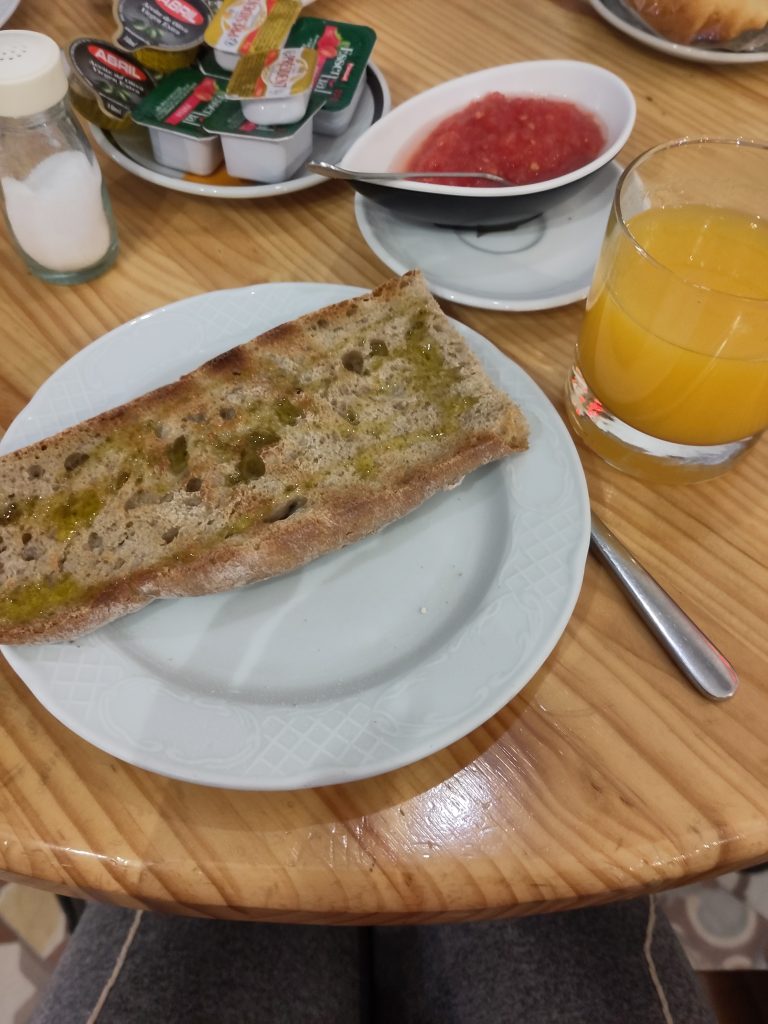
The next day, after the classic breakfast of toasted bread with tomatoes and olive oil, the wetland site for this day is much lower in a more sheltered area.
Soil sampling in wetlands is a swampy affair. The extracted sites fill very quickly with water since the soils there are water-logged. So it is a little race against the time to take photos of the soil pit. After sampling the first sites we encountered some of the rare wetland earthworms (they do not like the acidic soils).





After a bit, I noticed that we were observed by a group of semi wild horses. What first started with some security distance turned soon into curious quality control. We returned the favour and the little visit with taking out some ticks with our tweezers. Those horses are semi-wild. They are grazing freely, from time to time checked for diseases before at one point they will turn into meat. Eating horses after their death was entirely commonplace for centuries. The stigma connected to it only started relatively recently. I remember the scandal in Germany, when there was horse meat found in a convenience lasagna. It was an outburst, as horses are not being eaten. You rather just through them away? Should this be a sort of appreciation for them? Would it not be more appreciation eating them after a long, healthy life instead of eating animals living in horrible conditions in huge stables? As a vegetarian, I am confused.




I did a little resesarch on eating horse meat and found out that keeping and eating horses in Galicia is these days more and more normal. However, this is more a Northern preference in Spain. The meat is told to be better than some cow meat. But there is a also a connection to poverty and necessity. The northern parts of Spain suffered particularly under famine conditions in the Franco regime. Having food stigmas on certain animals could just not be afforded.
Then, there is also a connection to religion. While in Judaism horses and all other hoof animals are considered not kosher, also Christianity condemned eating horses after 700 aC. Why? I have no clue. It seems that eating horses in Europe is more common in areas where pagan traditions were longer preserved or Christianity less strictly executed. This seems to hold true for Galica, where many pagan traditions were upheld and continue to be upheld. Also, a lot of the horse meat that is “produced” here is exported to France and Italy.


Ok, back to the soil sampling, where with with rising temperature in the midday sun at noon, the simultaneous and synchronized chorus of the frogs started. I observed some of the beautiful frogs while washing of the soil from our equipment in the nearby river. So beautiful green frogs. Always when I see amphibeans I am reminded on how they are endangered and how future generations will probably live in a world without them. A world without frogs and salamanders, what a sad imagination.
There is this crazy smell of wetland soil. It ranges from kind of offsetting/sulfuric to smelling very appealing. The more anoxic and anaerobic the soil is because of a lack of oxygen, the more sulfuric gets the smell. Evolutionary, this smell is programmed in us to cause disgust to prevent us from eating off/decomposed meat. Some other sites, however, where the soils were less waterlogged, they actually smelled very good – hard to describe but like some sort of herbs or incence/olibanum.
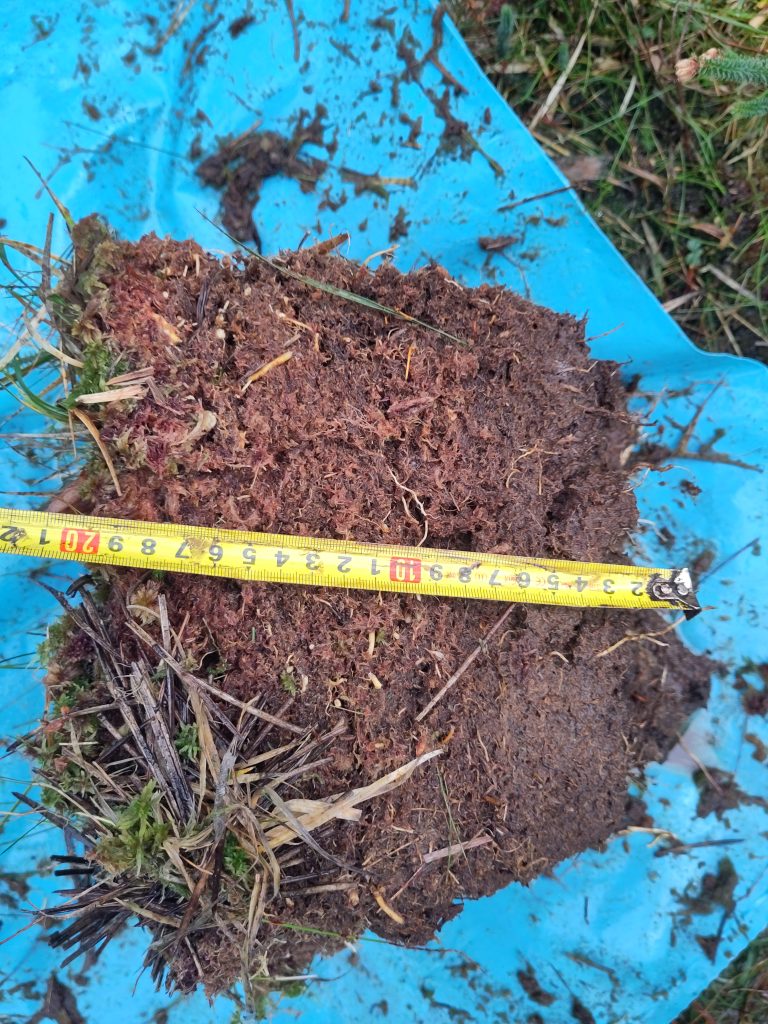
Apart from crazy smelling soil, we also came by some incredible fauna. Much of the wetland fauna is endangered and on red lists, primarily because they only inhabit wetlands, which are themselves threatened with extinction. They are dried up in many areas to be used for agriculture instead. However, wetlands store a huge amount of carbon. A lot of the microorganisms there are not decomposed but just “conserved” in the water. This is an important regulator of carbon cycles. However, when wetlands are dried up, this carbon is released.













We also met some little beautiful salamanders.


And a lot of carcasses. That made me realise how rare it became to see carcasses these days. So often they are “cleaned up” despite that they are actually an important nutrient source for many organisms. They add a lot of important calcium to soils.
More on Vilabla, including some witchy morning discoveries
Vilalba is also a town with cameras to protect the plants from being stolen. Those plants grow in a plastic cover to prevent herbs to grow. This seems a bit weird for such a small, sleepy town. Apart, the town also has a Fluvial playa that seemed to be the place to be on hot summer days. When I run by there in the morning, it was covered in misty fog. I came by some magical twisty, moss overgrown paths. Along that river, it felt like the place where the witches live. Being alone with the song of the birds, the slowly rising fog and that great fresh earthy smell – it was just incredibly beautiful there.






There is also that professor friend of my professor that picks us up in the evening for dinner. I barely understand him due to his heavy gallego influence but also his slightly unclear pronunciation. He has this classical dry Gallego humour. Also, he normally eats his dinner at midnight and rather was confused about my wishes to eat at 9. He teaches biology in Lugo another place with a hard to access university. To my question if students cycle he said the last one daring ended with 4 broken rips.
We went to this overhyped pizzeria that is doing a good dough but a weird topping. The cheese is horrible, there is just no taste. I know taste is subjective but I still have my doubts about some of the Galician preferences. I just think as isolated as they are on the map, made them also to an extent stubborn and proud preventing them from seeing good ideas from outside. Also while most of the rest of Spain’s kitchen is heavily influenced by the Romans, in Galicia they arrived quite late. By the time they must have been already a bit disillusioned and half hearted or people there just too resilient to the the new influences.
The next evening, we went to this funny taverna in this cold basement with a mixture of beautiful dragonfly lamps and the rest weirdly “modern” cabinets to set in. The menu offered only one ‘vegetarian’ option, ‘the mixta’ salad, which would have included tuna had I not asked. Ahh Galicia…

